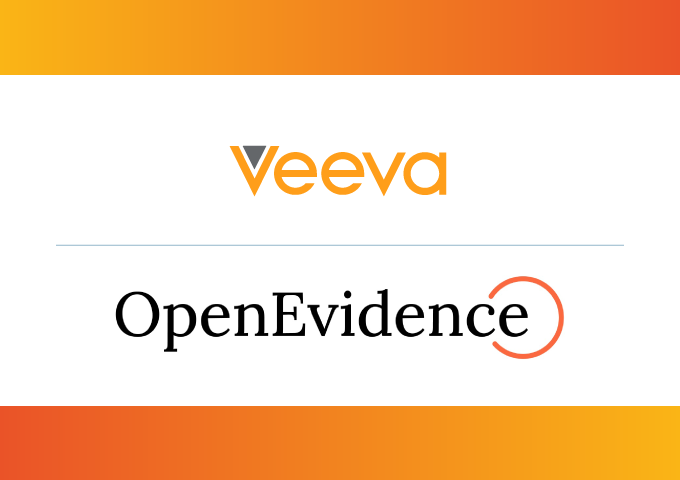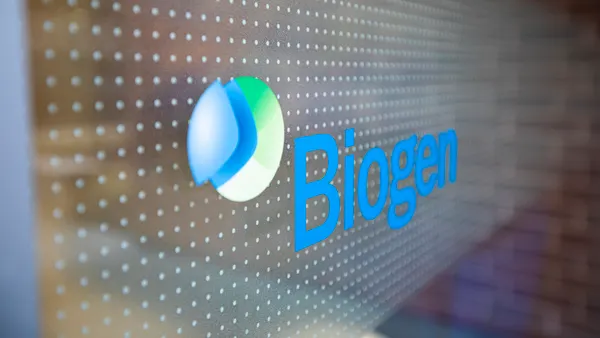Early in her career, Adelene Perkins learned an important lesson about leadership: people work because they want to, not because they are told to. This truism has become a central plank of Ms. Perkins’ management style as she helps put together teams that will drive a company’s success. Central to her philosophy is to make sure people understand the organization’s goals and visions and to ensure that all employees have a voice in the achievement of these goals. People have been the center of Adelene Perkins’ leadership style from her first job out of college. By placing the emphasis on team building and staff morale, Ms. Perkins has helped create a winning formula wherever she has been, including her role as chief business officer of Infinity Pharmaceuticals Inc., a nascent drug-discovery company that uses small-molecule chemistry technologies to develop targeted therapies for the treatment of cancer and related conditions. “I consistently find that when people really believe in the goals that are set, they do more than I would ever dream of asking them to do, because the motivation comes from within,” Ms. Perkins says. “There is no substitute for that internal drive.” It is an approach that Ms. Perkins uses to promulgate Infinity’s goals to its staff, partners, and investors and has become a cornerstone of the company’s corporate values. The company describes itself as having a culture of citizen ownership, which among other things ensures that staff members know that their opinions really matter, that they can play an active role in decision-making processes, and that what they do is important and adds value to the enterprise. Infinity describes its staff as citizen owners who work as a community, rather than employees who work for a company. From the clinic to business strategies to operations, Infinity’s success, Ms. Perkins says, will be driven largely by the caliber and commitment of its staff. “It’s unfortunate that everyone always says it’s all about ‘people, people, people’ because overusing the concept makes it seem less important and powerful,” Ms. Perkins says. “People really are the single most important factor in building a company, and it’s really hard to get right. I find that one of the most challenging and also the most fun aspects to getting a young company up and running is getting the right group of people together who share a mindset on setting ambitious goals and finding a way to make them happen.” Solving Problems and Building Teams Taking her parents’ advice to choose a path with sound career prospects, Ms. Perkins completed a degree in chemical engineering at Villanova University. Though Ms. Perkins spent only a few years in that discipline, the education she received provided her with good insights into problem solving. “The chairman of our chemical engineering department was notorious for giving final exams that were a single question and, at the end of the day, there was a single correct answer,” Ms. Perkins says. Ms. Perkins says the questions were multifaceted and the key was learning how to break the problem down quickly into pieces, solve those pieces, and reintegrate the solutions into the overall answer. “Problem solving was really like a brain teaser, which could be fun if it was approached like a game,” she says. “There’s almost nothing I’ve done in my career that hasn’t required similar problem-solving skills.” It was while working as a production engineer at General Electric Co., Ms. Perkins’ first job out of college, where she learned how vital it was to solve problems related to people issues. As the new kid on the block, Ms. Perkins alternated between the second shift and the graveyard shift. While operations had run smoothly at the plant in Waterford, N.Y., throughout the summer, it was on October 1, the start of deer-hunting season, when a personnel hiccup occurred. The day-shift engineer had instituted a policy of no days off and no sick leave so he could institute some plant improvements. Angry operators began to rebel, and ultimately the day-shift engineer was reassigned. Ms. Perkins was moved into that role. “One of the first things the operators and I did was to come up with a schedule where the operators alternated and covered for one another so they could go hunting while at the same time ensure plant improvements could be implemented,” she says. “It was a very easy thing to do because we worked together to come up with the solution. The operators were amazing and went above and beyond to get the job done. It was a fascinating experience for me, and one that now seems so obvious — people work because they want to not because they’re told to. This was a valuable lesson to learn so early in my career.” After two years at GE, Ms. Perkins studied for a MBA at Harvard. This experience, she says, exposed her to many new fields and possible careers. Interested in gaining experience with a broad spectrum of business issues, Ms. Perkins joined Bain & Co. as a consultant, with her two major clients being a pharmaceutical company and a healthcare provider. What attracted Ms. Perkins to Bain were the people and the company’s heavy focus on results; Bain measured its performance based on its clients’ successes and valuation relative to competitors. Such an approach meant only working with one client in an industry, Ms. Perkins says. Eventually, though, while Bain’s clients were prospering, there came a point where the consultancy was limited by having only one client per industry sector. As a result, the company put together an internal case team, which Ms. Perkins led, to assess Bain’s strengths and future direction. “We concluded that it was possible to leverage the expertise we’d developed in an industry without violating the confidentiality of any one client,” Ms. Perkins notes. From there, Bain consultants were asked to focus on particular areas of expertise. “For me it was a no-brainer because I’d worked with a healthcare provider and pharma company for so long,” she says. “We had clients in each sector of the healthcare industry at the time, so it made great sense to form a healthcare practice area.” According to Ms. Perkins, what was most fulfilling about her experience at Bain was working closely with clients and, as she puts it, “figuring out how to help them address their most pressing issues by making their problems your problems, their needs your needs.” “That’s no doubt why we were able to have relationships that went on for years,” she says. “Having successful relationships with clients meant ensuring early on that their success and Bain’s success were inextricably linked, that we had a shared set of goals, that we knew what the deliverables were, and that we worked well as a team.” Partnering with Integrity The client and team-building skills Ms. Perkins honed at Bain have become invaluable as she has moved along in her career in biotechnology, from Genetics Institute Inc. to TransForm Pharmaceuticals Inc. to Infinity. “To me, building companies is a big team-building exercise,” she says. “Whether working with people inside or outside the company, I believe the key is understanding where others are coming from. It’s also been particularly important in the domain of business development. When working to establish collaborations with pharmaceutical partners, it’s very much the same dynamic of ensuring that both sides understand one another’s goals and take our roles in contributing to one another’s success seriously — that way we can effectively work together to create value.” At Genetics Institute, which she joined after Bain and which later was acquired by American Home Products, Ms. Perkins cofounded the DiscoverEase Business unit. The unit arose out of Genetic Institute’s realization that it needed to play a role in the genomics revolution and that it could do so by leveraging its expertise with protein therapeutics. The strategy was rooted in a belief that the most direct way to figure out what a protein does is to have the protein to test. “We built a team of people committed to isolating and expressing all of the genes that encode for secreted proteins, which would then be the candidates for protein therapeutics,” Ms. Perkins says. “That was perhaps one of the most exciting experiences I’ve ever had because we grew the business unit from two people to 100 people in about a year. This was an incredibly driven group of people. As we went out and broadly partnered this asset, there was great enthusiasm for the phenomenal contribution such a collection of proteins would have on drug discovery.” Ms. Perkins took her achievements in helping to build the DiscoverEase team at Genetics Institute to TransForm, an emerging pharmaceutical company that develops high-throughput technologies in solid-state chemistry and formulations design. One of Ms. Perkins’ top priorities when she joined TransForm, which was just getting off the ground, was to help build up the management team, recruiting both a CEO and a high-caliber chief scientific officer in the field of physical chemistry in drug discovery and development. Additionally, Ms. Perkins’ role was to raise capital and build relationships with pharmaceutical partners. Among her achievements was establishing a major strategic alliance for the company with $25 million of committed funding and retaining product rights for TransForm. This relationship ultimately resulted in the acquisition of TransForm by its alliance partner, Johnson & Johnson. In 2002, Ms. Perkins took her fine-tuned skills to another startup: Infinity. The attraction, she says, was an opportunity to work with Infinity’s President and CEO Steven Holtzman, with whom she had strong genomics-world ties. While Ms. Perkins was working at Genetics Institute, Mr. Holtzman was Millennium Pharmaceuticals’ chief business officer. “For years, we had said it would be great to find a way to work together,” Ms. Perkins says. Another important impetus for the move was Infinity’s vision, which from the start was focused on discovering drugs through the use of novel chemistries. “Many start-up companies that are focused on platforms get caught in the rut of being a platform company forever,” she says. “Infinity’s chemical technologies are such that the platform can be used to generate leads for our internal drug discovery as well as generate cash through select partnering opportunities. The real value creator for the company, however, is discovering drugs.” As chief business officer at a small company, Ms. Perkins is required to wear many hats, and it’s this multifaceted job description that she finds so appealing. “One of the great lures of a small company is that every single person in the company has great visibility and the opportunity to impact direction, starting with our young scientists, who are at the heart of how we translate interest in a target into a drug that we can get to patients,” she says. Most critically, Ms. Perkins’ role is in building relationships — both internally and externally — and forming partnerships and alliances. “My role is to seek partners that have an interest in our technologies; to have the discussions around how we might work together in ways that create value for both companies; to understand what the pharmaceutical partner’s real needs are and how we can fill a gap; and to be very clear in communicating what is important to us in that relationship,” she says. Her experience in building relationships in all of her previous positions has been a boon to Infinity, most particularly because of her trusted reputation within the industry. “Gabe Schmergel, who was the CEO of Genetics Institute, used to say to me, ‘the one thing you have in this business is your reputation,'” Ms. Perkins notes. “That’s absolutely true. It’s such a small world that at this point there’s probably not a pharmaceutical company with which I haven’t had some sort of a relationship. The most important thing to me is being able to go back to people I’ve worked with before and hope they want to go down that path again.” Possibilities, Not Obstacles Ms. Perkins’ philosophy undoubtedly falls into the “glass half full” category, preferring to view challenges as opportunities rather than as obstacles. “I recognize there are a lot of things that we, as an industry, need to do better and differently, but I truly see these challenges as opportunities,” she says. “We have an enormous opportunity to satisfy significant unmet medical needs in cancer. We have the opportunity to make sure that the role of pharmaceuticals in healthcare is appreciated so drugs are valued based on the impact they have on healthcare and are not just viewed as an expense. We have an opportunity to show leadership by disclosing the results of clinical trials in a very transparent, open way. I think there is clearly an opportunity to find ways to bring pharmaceuticals to the developing world in a more effective way. These are opportunities that we need to find ways to address.” In just three years, that optimism has paid dividends for Infinity. When Ms. Perkins joined the start-up company, it was less than one-year-old; today the company employs 100 people. On the financial front, the company has raised more than $130 million since inception, and Ms. Perkins has been instrumental in putting together deals with such high-profile partners as Amgen, Novartis, and J&J. Teamwork and a shared vision on how to achieve aggressive goals are paramount, no matter the company or position, she believes. Previously in her career, Ms. Perkins found that when a vision no longer resonates, then it’s healthier all around to move on. After the sale of Genetics Institute to American Home Products, which in turn became Wyeth, the goal of the DiscoverEase business unit to collaborate broadly in the industry to fully explore the functions of proteins no longer fit. “In my view, when collaborations have the potential of discovering something that might otherwise not have been discovered, then you are acquiring 50% of an asset,” Ms. Perkins says. “But that mindset was not really compatible with a big pharmaceutical view that partnering means giving away 50% of an asset, which leads to the concern about letting go of one of the crown jewels. We decided it was best just to fold DiscoverEase into a research unit within Wyeth, and that’s when I decided to look to do something else.” As a small company, Infinity is quite another story. By focusing on people and building teams that are truly committed to the company’s goals of developing cancer therapeutics, Ms. Perkins says everything else seems to fall into place. “I think we’ve reached a point where the members have tremendous respect for one another’s disciplines and for one another’s capabilities,” she says. Even on often-painful issues such as investment choices and budgets, the team has been able to quickly and collaboratively achieve consensus around tough decisions without the political processes and empire building that so often exist within an organization. “We conducted a satisfaction survey with our employees on an anonymous basis, where we asked questions such as: Do you understand your goals and how your goals fit within the company?” Ms. Perkins says. “And 95% of employees responded that they understood their specific goals and how they fit into the overall company goals; 90% of employees said they are satisfied or extremely satisfied. Last year, we set an incredibly ambitious goal for filing our first IND, and we met this milestone. That’s becau e everyone knew the goal, knew his or her role, knew how to get there, and liked working with colleagues to make it happen.” PharmaVOICE welcomes comments about this article. E-mail us at [email protected]. Committed to Drug Discovery In an exclusive interview with PharmaVOICE, Adelene Perkins, Chief Business Officer of Infinity Pharmaceuticals, talks about what motivates her, how to meet the challenges the industry faces, and the people who have inspired her. What aspects of the industry motivate you and what do you find gratifying in terms of the research that Infinity Pharmaceuticals is doing? I’m motivated by the people and the industry’s goals. I think this industry attracts a special group of people who want to do more than just a job. I can’t imagine doing anything that would feel more worthwhile. Personally, I’m very excited about the HSP-90 program. Unfortunately, a very good business school friend and former roommate of mine, Kathy Giusti, was diagnosed with multiple myeloma several years ago. She formed an organization called the Multiple Myeloma Research Foundation, and as a favor she came in and spoke to our company. We all have really high expectations about how quickly we can move HSP-90 through development and FDA approval, but even the best case scenario was a three- to four-year plan. When Kathy talked to the company, she shared a conversation about a friend who had gone through many different treatments that hadn’t worked and who had called her desperate to find a clinical trial he could participate in. Kathy reinforced our sense of urgency to get our compound into the clinic so people who have no other options might be tested with our drug right away. It was motivating for all of us committed to helping patients to be reminded that we don’t have to wait until a drug is approved to have an impact on someone’s life. What are the biggest challenges emerging companies face? At the end of the day, drug discovery is a really tough process; it’s expensive, it’s risky, and it takes a lot of effort. But I truly believe there are certain people who are particularly good at this, much in the same way as there are great writers and great artists. I believe that with our scientific leadership we have that same situation. Julian Adams, Ph.D., has this type of artistic ability. Dr. Adams, who just turned 50, has already developed two novel first-in-class drugs in his career. There are a lot of challenges that the industry faces, but with the right people and the right motivations, these problems can be overcome. Who are the people who have been an inspiration to you? My parents have been a great source of overall inspiration and were the most influential people in guiding my choices on education and career path. This led me to professional settings where I have had the opportunity to be influenced by great leaders in action. When I was at GE, Jack Welsh was very inspirational. Despite leading a large, complex organization, everyone knew and understood the company’s goal of being No. 1 or No. 2 in an industry. When I went to Bain, Mitt Romney was leading recruiting; he is now the governor of Massachusetts. During the recruiting process he shared examples of the impactful work Bain had done, while at the same time he talked a lot about his five young sons. I was impressed that he held his work to such high standards while placing such a high priority on family, because my family is an enormously high priority for me. When I went into biotech, I had the privilege of working with Gabe Schmergel, who was a wonderful role model on the importance of building value with integrity. Although I didn’t fully appreciated it at the time, in the current climate of corporate scandal, I was lucky to be mentored by someone who reinforced this value. Team Player 2002 — Present. Chief Business Officer, Infinity Pharmaceuticals Inc., Cambridge, Mass. 2000 — 2002. VP of Business/Corporate Development, TransForm Pharmaceuticals Inc., Lexington, Mass. 1996 — 1999. VP of Emerging Business, General Manager of DiscoverEase, Genetics Institute/Wyeth/American Home Products, Cambridge, Mass. 1995 — 1996. President and Chairman of the Board of Directors, MetaMorphix, Genetics Institute/Wyeth/American Home Products, Cambridge, Mass. 1992 — 1995. Corporate Development, Genetics Institute/Wyeth/American Home Products, Cambridge, Mass. 1985 — 1992. Manager, Bain & Co., Boston 1981 — 1983. Production Engineer, General Electric Co., Waterford, N.Y.; Product Development Engineer, Plastics Research; GE, Waterford, N.Y. Education 1985. MBA, Harvard Graduate School of Business Administration 1981. Bachelor of Science in Chemical Engineering, Cum Laude, Villanova University; Dean’s Award for Academic Excellence, May 1981 Associations 2002 — Present. Board of Directors, Project Hope, Dorchester, Mass. Adelene Perkins — Resume Infinity’s Research Focus Infinity Pharmaceuticals is developing targeted therapies for the treatment of cancer and related conditions through the use of its innovative small-molecule chemistry technologies. The company says its goal is to understand, at a molecular level, how tumors adapt to survive and, based on this understanding, to discover and develop novel therapeutics that will either kill the cancer cells directly or sensitize them to cytotoxic chemotherapies. Infinity’s integrated team of synthetic, process, natural product, combinatorial, and medicinal chemists applies a broad arsenal of technologies to discover and develop drug candidates. Inspiration is drawn from biologically active natural products to generate development candidates and Infinity’s proprietary compound collection created through the application of diversity-oriented synthesis (DOS). “The embodiment of our strategy is that we have both a platform component to our business and a product component to our business,” says Adelene Perkins, chief business officer of Infinity. DOS chemistry is a combinatorial synthetic approach that is distinctive in terms of its output. While compounds produced through combinatorial approaches are usually relatively simple, “flat” molecules with no stereochemistry, DOS molecules are more complex, three-dimensional, and feature multiple (completely controllable) stereocenters. “Through DOS we create a collection of small molecules that can be used for drug discovery,” Ms. Perkins says. “We create these compound collections and use them as an asset for our own product drug discovery and in partnership with other companies, which through license fees and equity investments have access to this asset on a nonexclusive basis.” The therapeutic goals are ambitious: one IND per year. Currently, the company has three lead programs in R&D. The first is IPI-504, a proprietary, targeted cancer therapy that preferentially induces the death of cancer cells through inhibition of the HSP-90 complex, or heat shock protein 90. “There’s interesting data that have revealed if the HSP-90 function is shut down, cancer cells commit suicide through a process of programmed cell death or apoptosis,” Ms. Perkins says. “We have some striking preclinical data on IPI-504’s activity, and we’re exploring this broadly for the treatment of both hematologic malignanices and solid tumors. Initially this drug will treat multiple myeloma. We’re very excited about this because our Chief Scientific Officer, Julian Adams, Ph.D., has worked in the multiple myeloma field and has wonderful relationships and contacts with key investigators. We’re going to be working with Dr. Ken Anderson at the Dana-Farber Cancer Institute, and we’re really excited about the impact that we can have on the program.” Infinity expects to commence human clinical trials of IPI-504 in the first half of this year. Second in the R&D line up is IPI-609, which operates through inhibition of the hedgehog cell signaling pathway. In preclinical studies, oral administration of IPI-609 as a single agent significantly reduced tumor burden in animal models of aggressive pancreatic cancer. Human clinical trials of IPI-609 are expected to commence in the first half of 2006. “The hedgehog pathway is turned on in the embryonic phases of development and turned off in adult organisms,” Ms. Perkins explains. “There’s significant data that show that this pathway is hijacked and turned back on in certain cancers, one of the most notable being pancreatic cancer. And there are data to demonstrate that if that pathway can be shut off again, the pancreatic tumors melt away.” Infinity’s third program is based on the Bcl platform — Bcl2/Bc-xL pathway: IPI-983. “The Bcl family is a platform that many companies have tried for a long time to discover leads against, and it’s proven to be really difficult,” Ms. Perkins says. “By screening the compound collection that we’ve synthesized from DOS, we have a couple of really exciting leads that are moving forward very quickly. We’re beginning discussions with prospective partners around those now. It’s a protein/protein interaction, which has historically been very difficult to drug with small molecules, and we’re really excited about where this target is in development.” The company hopes to file an IND for the Bcl program in 2007. I consistently find that when people really believe in the goals that are set, they do more than I would ever dream of asking them to do because the motivation comes from within. There’s no substitute for that internal drive.
An article from


Adelene Perkins -- People-Centric: Developing a Unified Vision
Filed Under:
Research & Development









